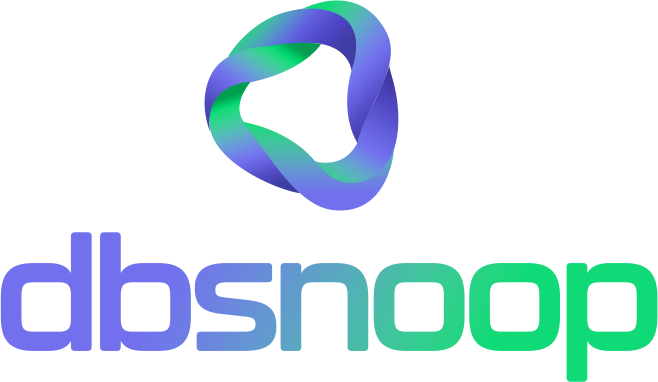
Relational databases are a cornerstone of modern data management, providing robust frameworks for organizing, retrieving, and manipulating data. However, even experienced database users can fall into the trap of creating Cartesian queries, leading to severe performance and resource issues. In this article, we will explore what Cartesian queries are, why they are detrimental, and how to avoid them to ensure optimal database performance.
What is a Cartesian Query?
A Cartesian query, often resulting from an unintended Cartesian product, occurs when a join condition between tables is omitted or improperly defined in an SQL query. This leads to every row from one table being paired with every row from another table. For example, if Table A has 1,000 rows and Table B has 500 rows, a Cartesian product would result in 500,000 rows.
Why Cartesian Queries are Bad
1. Performance Issues
Exponential Growth of Results: The most immediate and noticeable effect of a Cartesian query is the explosion in the number of rows returned. This not only overwhelms the client application but also puts a significant load on the database server as it processes an unnecessarily large dataset.
Slow Query Execution: With the exponential increase in the number of rows, the query execution time increases dramatically. This slow execution can cause timeouts and degraded performance for other operations in the database.
2. Resource Issues
CPU and Memory Consumption: Processing a large number of rows consumes excessive CPU and memory resources. This can lead to resource contention, where other queries and processes suffer due to the lack of available resources.
Disk I/O Overhead: Writing the results of a Cartesian query to disk or even just transferring the data across the network can cause significant disk I/O, further impacting the performance of other operations.
3. Locking Issues
Increased Locking Duration: Cartesian queries often take longer to execute, which means that locks on the involved tables might be held for longer durations. This can lead to lock contention, where other transactions are forced to wait, reducing overall system throughput.
Deadlocks: The increased locking and resource usage can sometimes lead to deadlocks, where two or more transactions are waiting on each other to release locks, causing the system to halt those transactions and potentially losing work.
4. Memory Issues
Excessive Memory Usage: Cartesian products can consume large amounts of memory, especially if the results are stored temporarily in memory before being written to disk or processed further. This can lead to memory exhaustion, causing the database or even the entire system to crash or slow down significantly.
Swapping: When the available physical memory is exhausted, the system may start using swap space on the disk, which is much slower than RAM. This further degrades performance and can cause the system to become unresponsive.
How to Avoid Cartesian Queries
1. Proper Join Conditions
Always Specify Join Conditions: When joining tables, always specify the join conditions explicitly. Use the ON clause for JOIN operations to define how rows from one table relate to rows in another table.
Example:
SELECT a.column1, b.column2
FROM TableA a
JOIN TableB b ON a.common_column = b.common_column;
2. Use INNER JOIN Instead of CROSS JOIN
Default to INNER JOIN: By default, use INNER JOIN unless you explicitly need a Cartesian product, which is rarely the case. INNER JOIN requires a condition that helps filter and relate the rows from the involved tables.
3. Verify Query Logic
Double-Check Query Logic: Before executing a query, review its logic to ensure that all necessary join conditions are present. Tools like query planners and explain plans can help visualize the execution flow and identify potential Cartesian products.
4. Limitations and Filters
Apply Filters and Limits: Where possible, apply WHERE clauses and LIMIT clauses to reduce the number of rows being processed and returned. This helps in minimizing resource usage and improving performance.
Example:
SELECT a.column1, b.column2
FROM TableA a
JOIN TableB b ON a.common_column = b.common_column
WHERE a.column3 = ‘some_value’
LIMIT 100;
Cartesian queries can severely impact the performance and stability of your relational database systems. By understanding the issues they cause and implementing best practices to avoid them, you can ensure efficient and effective database operations. Always define clear join conditions, verify your query logic, and use filters to keep your queries optimized and your database running smoothly.
How dbsnOOp Flightdeck Helps Prevent Cartesian Queries
1. Query Monitoring and Analysis
Real-Time Query Monitoring: Flightdeck provides real-time monitoring of all queries executed on your database. This feature allows you to identify any unexpected Cartesian queries as soon as they occur, enabling prompt corrective action.
Detailed Query Analysis: The platform offers in-depth analysis of query performance, including execution plans, resource usage, and row counts. This helps in identifying queries that may inadvertently result in Cartesian products, allowing you to optimize them before they cause significant issues.
2. Alerts and Notifications
Customizable Alerts: With Flightdeck, you can set up customizable alerts to notify you when a query exceeds certain performance thresholds, such as execution time or resource consumption. This ensures that you are immediately aware of any potential Cartesian queries that could degrade performance.
Anomaly Detection: The platform’s anomaly detection capabilities can identify unusual patterns in query execution, such as a sudden spike in the number of rows processed, which may indicate a Cartesian query. This proactive approach helps in addressing issues before they escalate.
3. Performance Tuning Recommendations
Automated Optimization Suggestions: Flightdeck provides automated recommendations for query optimization, including indexing suggestions, join condition improvements, and rewriting complex queries. These recommendations help in refining queries to avoid Cartesian products and improve overall performance.
Historical Data Analysis: By analyzing historical query performance data, Flightdeck can identify trends and recurring issues, offering insights into long-term optimization opportunities and preventing the recurrence of Cartesian queries.
4. Resource Management
Resource Usage Tracking: Flightdeck tracks the resource usage of each query, including CPU, memory, and disk I/O. This detailed tracking helps in identifying queries that consume excessive resources due to Cartesian products, enabling you to take corrective measures.
Lock and Deadlock Analysis: The platform provides visibility into locking and deadlocking issues caused by inefficient queries. By identifying and resolving these issues, Flightdeck helps maintain smooth database operations and prevents the cascading effects of Cartesian queries on system performance.
5. Collaborative Platform
Team Collaboration: Flightdeck allows database administrators, developers, and operations teams to collaborate effectively. By providing a shared platform for query analysis and optimization, it ensures that all stakeholders are aware of potential issues and can work together to resolve them.
Documentation and Best Practices: The platform offers documentation and best practices for query writing and optimization. By educating users on the pitfalls of Cartesian queries and how to avoid them, Flightdeck promotes a culture of efficient and effective query management.
See it in action:
Give it a try for 14 days, no burocracy, no credit card
Learn more about Flightdeck!

Or schedule a demonstration with us:


